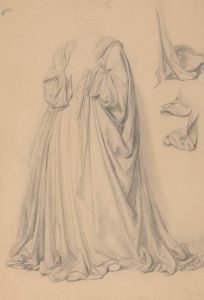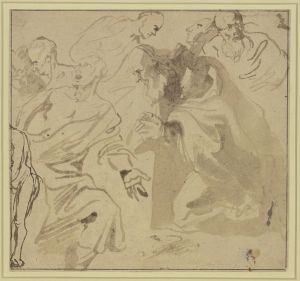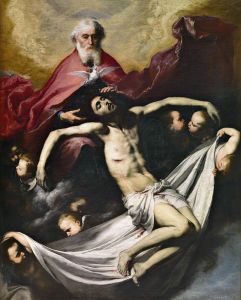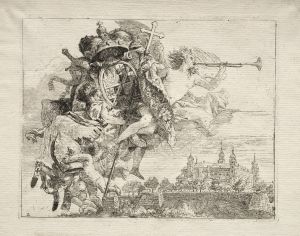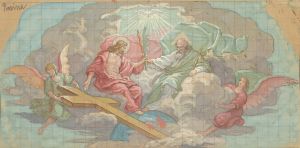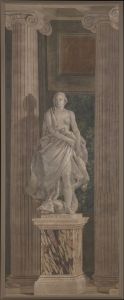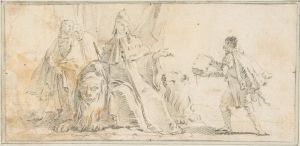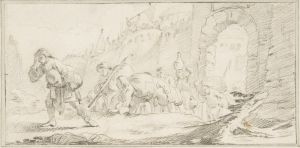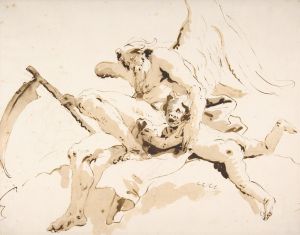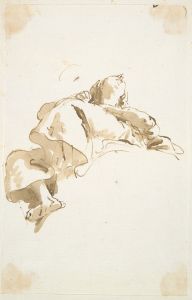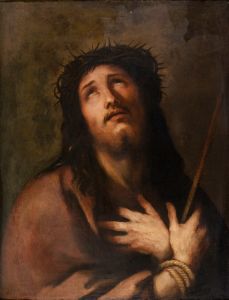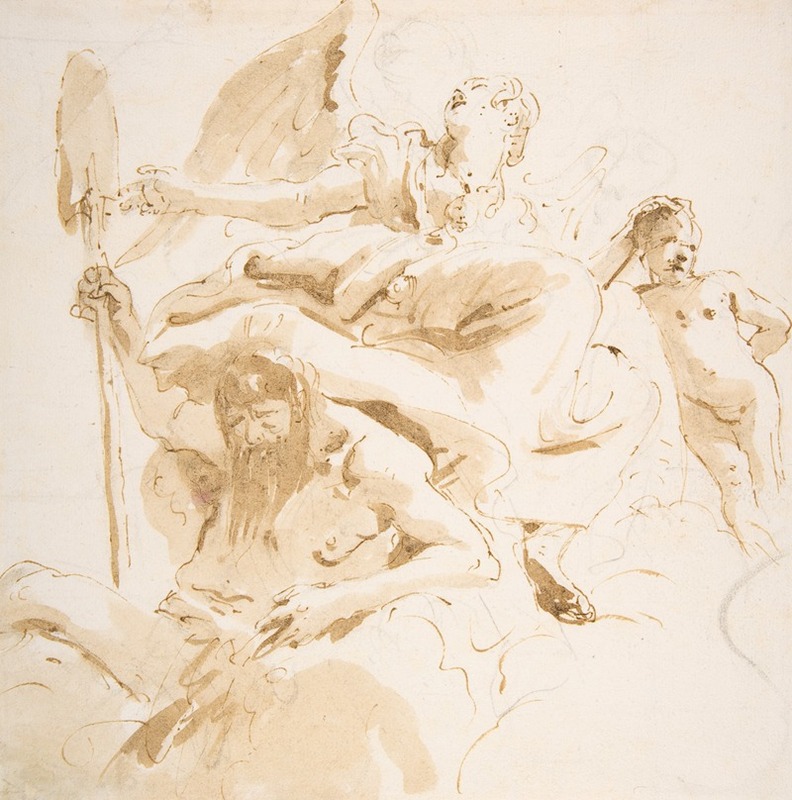
Winged Female Figure, River God, and a Nude Boy
A hand-painted replica of Giovanni Battista Tiepolo’s masterpiece Winged Female Figure, River God, and a Nude Boy, meticulously crafted by professional artists to capture the true essence of the original. Each piece is created with museum-quality canvas and rare mineral pigments, carefully painted by experienced artists with delicate brushstrokes and rich, layered colors to perfectly recreate the texture of the original artwork. Unlike machine-printed reproductions, this hand-painted version brings the painting to life, infused with the artist’s emotions and skill in every stroke. Whether for personal collection or home decoration, it instantly elevates the artistic atmosphere of any space.
Giovanni Battista Tiepolo was an Italian painter and printmaker, renowned for his grandiose and imaginative frescoes and paintings that epitomize the Rococo style. Born in Venice in 1696, Tiepolo became one of the most prolific and celebrated artists of the 18th century, known for his vibrant use of color, dynamic compositions, and the ability to convey complex allegorical themes with clarity and elegance.
"Winged Female Figure, River God, and a Nude Boy" is one of Tiepolo's works that exemplifies his mastery in depicting mythological and allegorical subjects. Although specific details about this particular painting are scarce, it is consistent with Tiepolo's broader oeuvre, which often included mythological figures, gods, and allegorical representations.
Tiepolo's work is characterized by its lightness, both in terms of color palette and the ethereal quality of his figures. His paintings often feature a sense of movement and drama, achieved through the use of diagonal compositions and the interplay of light and shadow. The figures in his paintings are typically rendered with a sense of grace and fluidity, capturing the viewer's attention through their expressive poses and gestures.
In "Winged Female Figure, River God, and a Nude Boy," Tiepolo likely employs these techniques to create a scene that is both dynamic and harmonious. The winged female figure could represent an allegorical or mythological character, possibly embodying concepts such as victory, fame, or divine intervention. The river god, a common motif in classical art, might symbolize the power and life-giving force of water, a theme that resonates with the artistic traditions of the time. The inclusion of a nude boy could serve as a symbol of innocence or a representation of a mythological figure, adding another layer of meaning to the composition.
Tiepolo's ability to blend these elements into a cohesive and visually captivating work is a testament to his skill as an artist. His paintings are not only admired for their aesthetic beauty but also for their ability to convey complex narratives and themes in a manner that is both accessible and intellectually engaging.
Throughout his career, Tiepolo received numerous prestigious commissions, working for royalty and the Catholic Church across Europe. His influence extended beyond Italy, with significant works in Germany and Spain, where he spent the latter part of his career. Tiepolo's legacy is evident in the way he shaped the Rococo style, leaving an indelible mark on the art world that continued to inspire artists long after his death in 1770.
While specific information about "Winged Female Figure, River God, and a Nude Boy" is limited, the painting remains a part of Tiepolo's rich artistic legacy, reflecting his ability to capture the imagination and convey profound themes through his art.






